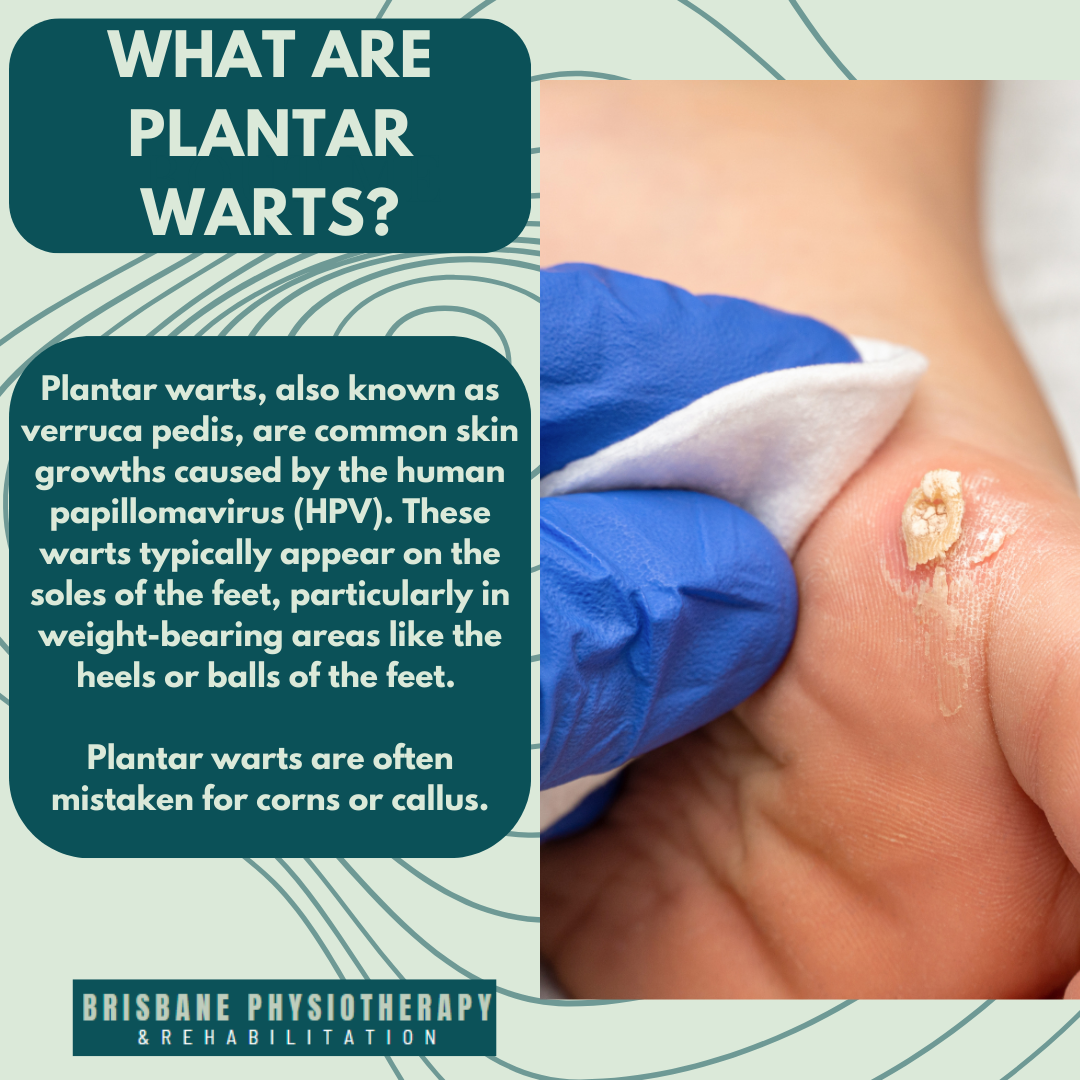What are Plantar Warts?
Plantar warts, also known as verruca pedis, are common skin growths caused by the human papillomavirus (HPV). These warts typically appear on the soles of the feet, particularly in weight-bearing areas like the heels or balls of the feet. Plantar warts are often mistaken for corns or callus.
Causes of Plantar Warts
Plantar warts are caused by infection with certain strains of HPV, which can enter the body through small cuts, abrasions, or breaks in the skin. Factors that increase the risk of developing plantar warts include:
Walking Barefoot: Walking barefoot in public places like swimming pools, locker rooms, or gym showers can increase the risk of HPV exposure and plantar wart infection.
Weakened Immune System: Individuals with weakened immune systems, such as children, the elderly, or those with conditions like HIV/AIDS, are more susceptible to HPV infection and subsequent wart development.
Skin-to-Skin Contact: Direct contact with an infected individual or contaminated surfaces can transmit HPV and lead to plantar wart formation.
Moist Environments: Prolonged exposure to moist or sweaty conditions can create favorable environments for HPV transmission and wart development.
Symptoms of Plantar Warts
The symptoms of plantar warts may vary but commonly include:
Pain: Plantar warts can cause discomfort or pain, particularly when walking or standing, due to pressure on the wart.
Visible Lesions: Plantar warts often appear as small, rough, grainy growths on the soles of the feet, with a characteristic cauliflower-like appearance.
Dark Spots: Tiny black dots may be visible within the wart, representing clotted blood vessels.
Thickened Skin: Surrounding skin may become thickened or callused over time, especially with larger or untreated warts.
Treatment Options for Plantar Warts
Treatment for plantar warts aims to remove the wart, stimulate the immune system, and eliminate the underlying HPV infection. Some common treatment options include:
Wait and See: Most warts will spontaneously resolve over time, however this time varies. In children 50% of warts are likely to resolve in 6 months and 90% gone by 2 years. In adults this can be much slower.
Topical Medications: Over-the-counter wart treatments containing salicylic acid or prescription-strength medications may be applied directly to the wart to remove it over time.
Cryotherapy: Liquid nitrogen can be applied to freeze and destroy the wart tissue, typically requiring multiple treatments.
Electrosurgery: A surgical procedure involving the use of an electric current to burn and remove the wart tissue, often used for larger or stubborn warts.
Laser Therapy: Laser treatment can be used to target wart tissue, particularly for deep or persistent warts.
Immunotherapy: Injections of immune-stimulating substances like interferon or application of immune-boosting agents may be used to enhance the body's natural immune response to HPV and eliminate the wart.
In conclusion, plantar warts are common skin growths caused by HPV infection and typically appear on the soles of the feet. With proper diagnosis and treatment, including topical medications, cryotherapy, electrosurgery, or laser therapy, plantar warts can be effectively removed, relieving discomfort and restoring foot health. If experiencing persistent foot pain or suspicious skin lesions, consulting a healthcare professional for evaluation and personalized treatment recommendations is essential.
